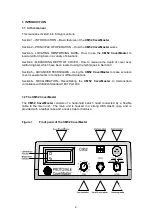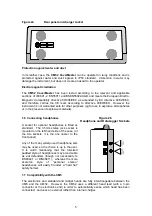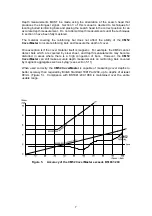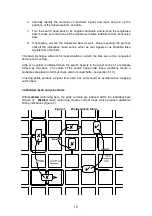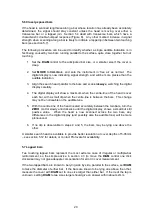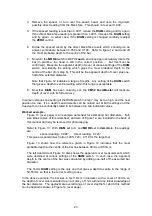
16
1. If the transverse bar is more than 10-20mm beyond the narrow end of the search
head (depending slightly upon the size of the bar and the depth of cover), there is
no significant error.
2. When the transverse bar is exactly beneath the centre of the search head, and
exactly at right-angles to it, the error in a cover measurement is generally 1mm or
less.
3. If a transverse bar lies anywhere else beneath the search head, errors can be
significant. Avoid such situations if at all possible.
In other words, if the pitch of the transverse bars is greater than about 170mm there is
little or no problem. For closer pitches, position the search head accurately over the
transverse bar to make the best possible cover measurement on the target bar.
5.5 Depth measurements in congested situations
The British Standards relevant to electromagnetic cover meters deal only with the
accuracy of depth measurements for single bars, and merely warn of potential
inaccuracies when other bars are present. To cope with real-life situations where
reinforcing may be very congested, the performance of the
CM52 CoverMaster
significantly exceeds the BS specifications.
Ideally the search head would respond only to a bar lying immediately beneath its centre-
line, and the design of the search coils in the
CM52 CoverMaster
gives a close approach
to the ideal.
Even so, the magnetic fields from the search coils does spread sideways to some extent
(Figure 9), so the search head may also respond to metal on either side of the target bar.
The effect of the other bars is to increase the received signal, and thus to underestimate
the depth of cover of the target bar. The size of this effect depends on the depth of bars
as well as their sideways separation – if all the bars are deep, the search head is more
likely to also respond to bars which are not immediately beneath it (Figure 9: right).
Figure 9 Response of search head to shallow and deep bars
Responds to only
Responds to
one shallow bar
three deeper bars

